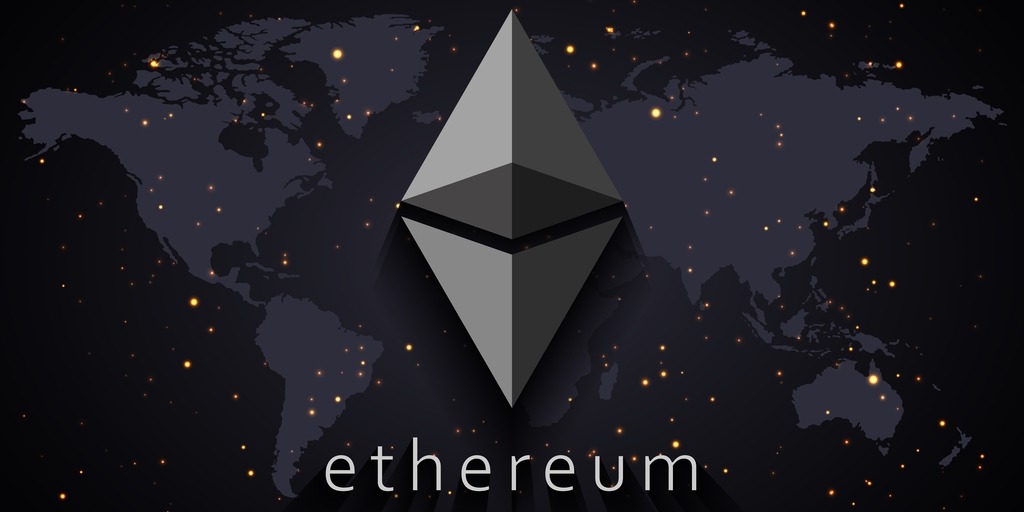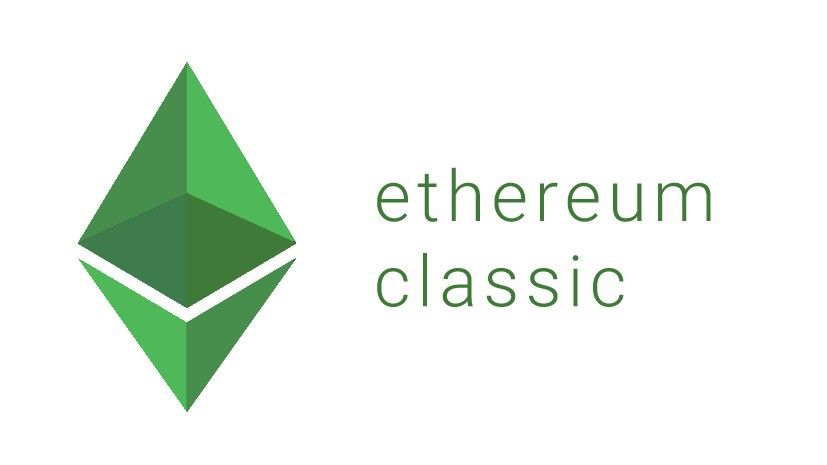Can Ethereum Conquer Intriguing High Gas Fees and Secure Long-Term User Adoption In 2024
Ethereum, the preeminent platform for smart contracts and decentralized applications (dApps), has revolutionized numerous industries. However, a persistent challenge threatens its long-term adoption and stability: high gas fees. These fees, paid by users to execute transactions on the Ethereum network, have become a significant barrier for entry, discouraging both individual users and developers from fully embracing the Ethereum ecosystem.
This article delves into the intricacies of gas fees on Ethereum, explores potential solutions, and analyzes their impact on user adoption and the platform’s future.
Demystifying Gas Fees: The Engine that Runs Ethereum
Gas fees on Ethereum are essentially the cost of using the network. They serve two crucial purposes:
- Compensation for Miners: Gas fees act as an incentive for miners who validate transactions on the Ethereum blockchain. Higher gas fees attract more miners, ensuring the security and smooth operation of the network.
- Network Congestion Control: Gas fees also function as a congestion control mechanism. When demand for block space is high, gas fees rise, deterring excessive transactions and preventing the network from becoming overloaded.
While gas fees play a vital role in Ethereum’s functionality, their current level has become a major pain point. Complex transactions or interactions with popular dApps can incur gas fees that outweigh the underlying value of the transaction itself. This discourages everyday users and hinders the scalability of the platform.
The User Exodus: How High Gas Fees Hinder Adoption – A Blockchain Conundrum
Blockchain technology holds immense promise for revolutionizing various industries. However, one critical hurdle continues to impede mainstream adoption: high gas fees. These fees, essentially the transaction costs on a blockchain network, are currently acting as a barrier to entry for many users, leading to a potential user exodus and hindering the true potential of blockchain technology. This deep dive explores the multifaceted issue of high gas fees and their detrimental impact on user adoption.
Understanding Gas Fees: The Engine that Runs, But at a Cost
-
The Core Concept: Gas fees are the charges associated with processing transactions on a blockchain network. They act as an incentive for miners or validators to verify and add those transactions to the permanent ledger.
-
Demand and Supply: Gas fees are determined by the basic principles of supply and demand. When there’s high demand for block space (limited due to block size constraints) and limited processing power, gas fees soar. Conversely, when demand is low, gas fees decrease.
-
Variability Across Blockchains: Different blockchains have varying fee structures and network congestion levels, leading to discrepancies in gas fees. For example, Ethereum, a popular blockchain platform, is notorious for its high gas fees compared to others.
The Crippling Effects of High Gas Fees: A User’s Lament
-
Stifled Innovation and Experimentation: High gas fees discourage developers from building and deploying innovative applications on the blockchain. The cost of even simple transactions can become prohibitive, hindering experimentation and slowing down the development cycle.
-
Exclusion of Everyday Users: For everyday users, high gas fees make basic interactions with blockchain applications impractical. Simple tasks like transferring tokens or interacting with decentralized platforms become expensive, pushing out potential users who are unwilling or unable to bear these costs.
-
Centralization of Power: High gas fees can inadvertently lead to centralization within the blockchain ecosystem. Only well-funded entities or those with a high volume of transactions can afford to consistently pay high gas fees. This creates an uneven playing field, potentially stifling the decentralized nature of blockchain.
Case Study: The Ethereum Enigma
Ethereum, a leading blockchain platform known for its smart contract functionality, exemplifies the challenges posed by high gas fees. The surge in popularity of Decentralized Finance (DeFi) applications on Ethereum significantly increased network congestion, driving gas fees to unsustainable levels. This led to:
-
User Frustration: Many users found it too expensive to interact with DeFi protocols due to exorbitant gas fees. This frustration led to a decline in user activity and a potential loss of confidence in the Ethereum ecosystem.
-
Migration to Alternative Blockchains: Seeking lower transaction costs, some developers and users migrated to alternative blockchains with lower gas fees. This fragmented the user base and hindered the overall growth of the Ethereum ecosystem.
Seeking Solutions: A Beacon of Hope Amidst the Challenges
Several promising solutions are being explored to address the issue of high gas fees:
-
Layer-2 Scaling Solutions: These solutions aim to process transactions off the main blockchain, reducing congestion on the primary network and lowering gas fees for users. Examples include rollups and sidechains.
-
Protocol-Level Changes: Blockchain protocols are constantly evolving, with developers exploring ways to optimize transaction processing and reduce gas costs. This includes increasing block size or implementing sharding techniques.
-
Adoption of Proof-of-Stake (PoS) Consensus Mechanisms: Switching from Proof-of-Work (PoW) to PoS consensus mechanisms can potentially improve scalability and reduce the energy consumption associated with mining, leading to lower gas fees.
A Collaborative Effort: The Path Forward
Addressing the issue of high gas fees requires a collaborative effort from various stakeholders:
-
Blockchain Developers: Continued innovation and development of efficient scaling solutions are crucial for long-term scalability and user adoption.
-
Network Users: Educating users about the complexities of gas fees and encouraging responsible network usage can help manage demand and optimize network resources.
-
Regulatory Bodies and Institutions: Creating a supportive regulatory environment that fosters innovation while maintaining financial stability is essential for blockchain technology to thrive.
A Sustainable Future for Blockchain
High gas fees pose a significant threat to the mainstream adoption of blockchain technology. However, the potential solutions outlined above offer a glimmer of hope. By fostering collaboration, embracing innovation, and prioritizing user experience, we can navigate this challenge and ensure a future for blockchain that is not only sustainable but also accessible to all. Only then can blockchain technology fulfill its true potential to revolutionize various industries and empower users across the globe.
Also, read – Demystifying Gas Fees: Top 10 Amazing Ways They Power Transactions On Blockchains Like Ethereum
Ethereum Towards a Scalable Future: Potential Solutions for Lower Gas Fees
Ethereum, the leading platform for smart contracts and decentralized applications (dApps), has faced a major hurdle in recent years: high gas fees. These fees, while crucial for network security and rewarding miners, have become a significant barrier to entry for everyday users and developers alike. However, the Ethereum community is not sitting idly by. Several promising solutions are being actively explored to usher in a scalable future for Ethereum, paving the way for lower gas fees and wider adoption.
Understanding the Bottleneck: Why Gas Fees are High on Ethereum
Before diving into solutions, let’s revisit the root cause of high gas fees: scalability. Ethereum, like other blockchains, has a limited block size. Each block can only hold a certain amount of data, and with a growing number of users and applications vying for space, demand often outstrips supply. This congestion drives up gas fees, making even simple transactions prohibitively expensive for some users.
A Multi-Faceted Approach: Solutions on the Horizon
To combat this challenge, the Ethereum community is exploring a multitude of solutions, each with its own advantages and considerations:
-
Layer-2 Scaling Solutions: These innovative approaches process transactions off the main Ethereum blockchain (“Layer 1”) on a secondary layer (“Layer 2”). Transactions are then batched and committed to the main chain periodically. Popular Layer-2 solutions include:
- Rollups: These solutions bundle multiple transactions into a single transaction on Layer 1, significantly reducing the amount of data stored on the main chain and lowering gas fees for users. Optimism and Arbitrum are prominent rollup examples.
- Sidechains: These operate as independent blockchains that run parallel to the main Ethereum chain. They can process transactions much faster and with lower fees, but security may be a trade-off as they rely on the security of the main chain to some extent. Polygon (previously Matic Network) is a well-known sidechain solution.
-
Protocol-Level Changes: The Ethereum protocol itself is undergoing upgrades to improve scalability. Key advancements include:
- The Merge: This highly anticipated upgrade will transition Ethereum from a Proof-of-Work (PoW) to a Proof-of-Stake (PoS) consensus mechanism. PoS is expected to be more energy-efficient and potentially reduce gas fees by streamlining block validation.
- Sharding: This proposed scaling solution aims to partition the Ethereum network into multiple shards, each processing transactions independently. This would significantly increase the overall processing capacity of the network, leading to lower gas fees. However, sharding is a complex undertaking and its implementation timeline is still under discussion.
A Collaborative Effort: Building a Scalable Future
The success of these solutions relies heavily on a collaborative effort from various stakeholders:
-
Blockchain Developers: Continuous innovation and optimization of Layer-2 solutions and protocol upgrades are essential for long-term scalability and user adoption.
-
Network Users: Educating users about the benefits and trade-offs of different scaling solutions is crucial for encouraging responsible network usage and widespread adoption.
-
Decentralized Application (dApp) Developers: Developing dApps that are gas-efficient and leverage Layer-2 solutions will contribute to a more scalable ecosystem.
-
The Ethereum Foundation and Research Teams: Continued research and development efforts focused on scaling solutions and protocol upgrades are vital for the long-term health of the Ethereum network.
A Delicate Balancing Act: Ethereum, Gas Fees, and the Quest for Sustainable Growth
Ethereum, the preeminent platform for smart contracts and decentralized applications (dApps), finds itself at a crossroads. High gas fees, while essential for network security and rewarding miners, impede user adoption and hinder the growth of the entire ecosystem. This creates a delicate balancing act – ensuring network security while fostering a user-friendly and accessible environment. Here, we delve into the complexities of this challenge and explore potential solutions that prioritize both user adoption and network security.
The Security-Cost Conundrum: Why Gas Fees Matter
-
Securing the Network: Gas fees act as an economic incentive for miners or validators to secure the Ethereum network. Higher gas fees incentivize more miners to participate, thereby enhancing the network’s resistance to malicious attacks.
-
A Double-Edged Sword: While crucial for security, high gas fees become a barrier to entry for everyday users and developers. Costly transactions discourage participation, hindering the network’s growth and potential impact.
The User Adoption Dilemma: The Impediments of High Gas Fees
-
Stifled Innovation: High gas fees make it expensive for developers to deploy and test dApps. This discourages experimentation and innovation, hindering the overall development of the Ethereum ecosystem.
-
Exclusion of Users: For everyday users, interacting with dApps becomes impractical due to exorbitant gas fees. Simple tasks like transferring tokens or using DeFi protocols become cost-prohibitive, limiting user adoption.
-
Centralization Risks: High gas fees can inadvertently lead to centralization within the blockchain ecosystem. Only well-funded entities or those with a high volume of transactions can consistently afford to pay high gas fees. This creates an uneven playing field, potentially undermining the decentralized nature of blockchain.
Seeking Equilibrium: Potential Solutions for a Sustainable Future
Fortunately, promising solutions are emerging to address the gas fee challenge while maintaining network security:
-
Layer-2 Scaling Solutions: These innovative approaches process transactions off the main Ethereum blockchain, reducing congestion and lowering gas fees for users. Examples include rollups and sidechains, each offering distinct advantages and considerations.
-
Protocol-Level Changes: The Ethereum protocol itself is undergoing upgrades to improve scalability. Key advancements include:
- The Merge: Transitioning from Proof-of-Work (PoW) to Proof-of-Stake (PoS) is expected to streamline block validation and potentially reduce gas fees by making the network more energy-efficient.
- Sharding: Partitioning the Ethereum network into shards, each processing transactions independently, could significantly increase overall processing capacity, leading to lower gas fees. However, sharding is a complex undertaking with a long development timeline.
A Collaborative Effort: The Path to Sustainable Growth
To achieve a sustainable future, a collaborative effort is essential:
-
Blockchain Developers: Continued innovation and optimization of Layer-2 solutions and protocol upgrades are crucial for long-term scalability and a user-friendly experience.
-
Network Users: Educating users about the trade-offs between security and gas fees empowers them to make informed choices and support the network responsibly.
-
Decentralized Application (dApp) Developers: Developing gas-efficient dApps and leveraging Layer-2 solutions can significantly contribute to a more scalable ecosystem.
-
The Ethereum Foundation and Research Teams: Continued research and development focused on scaling solutions and protocol upgrades are vital for the long-term health of the Ethereum network.
Conclusion: A Collaborative Effort for a Thriving Ethereum Ecosystem
The challenge of high gas fees on Ethereum is multifaceted. Addressing it requires a collaborative effort from developers, researchers, and the broader blockchain community. By implementing scaling solutions, fostering the adoption of layer-2 technologies, and continuously refining the network’s economic model, Ethereum can overcome the gas fee hurdle and pave the way for a future of long-term user adoption and a thriving dApp ecosystem.
As Ethereum evolves, it will be fascinating to see how these solutions unfold and how they shape the future of this pioneering blockchain platform. With a focus on scalability and affordability, Ethereum has the potential to become a truly inclusive platform, empowering users and developers alike to build a decentralized future.
Stay informed with daily updates from Blockchain Magazine on Google News. Click here to follow us and mark as favorite: [Blockchain Magazine on Google News].
Get Blockchain Insights In Inbox
Stay ahead of the curve with expert analysis and market updates.
latest from tech
Disclaimer: Any post shared by a third-party agency are sponsored and Blockchain Magazine has no views on any such posts. The views and opinions expressed in this post are those of the clients and do not necessarily reflect the official policy or position of Blockchain Magazine. The information provided in this post is for informational purposes only and should not be considered as financial, investment, or professional advice. Blockchain Magazine does not endorse or promote any specific products, services, or companies mentioned in this posts. Readers are encouraged to conduct their own research and consult with a qualified professional before making any financial decisions.

 Bitcoin
Bitcoin  Ethereum
Ethereum  XRP
XRP  Tether
Tether  Solana
Solana  Dogecoin
Dogecoin  USDC
USDC  Cardano
Cardano  Lido Staked Ether
Lido Staked Ether  TRON
TRON  Avalanche
Avalanche  Sui
Sui  Wrapped stETH
Wrapped stETH  Chainlink
Chainlink  Toncoin
Toncoin  Shiba Inu
Shiba Inu  Stellar
Stellar  Wrapped Bitcoin
Wrapped Bitcoin  Hedera
Hedera  Polkadot
Polkadot  WETH
WETH  Bitcoin Cash
Bitcoin Cash  Uniswap
Uniswap  Pepe
Pepe  Litecoin
Litecoin  LEO Token
LEO Token  Hyperliquid
Hyperliquid  Wrapped eETH
Wrapped eETH  NEAR Protocol
NEAR Protocol  Ethena USDe
Ethena USDe  Internet Computer
Internet Computer  USDS
USDS  Aptos
Aptos  Aave
Aave  Mantle
Mantle  Bittensor
Bittensor  Cronos
Cronos  POL (ex-MATIC)
POL (ex-MATIC)  Virtuals Protocol
Virtuals Protocol  Ethereum Classic
Ethereum Classic  Render
Render  Artificial Superintelligence Alliance
Artificial Superintelligence Alliance  Arbitrum
Arbitrum  MANTRA
MANTRA  Ethena
Ethena  Tokenize Xchange
Tokenize Xchange  WhiteBIT Coin
WhiteBIT Coin 



